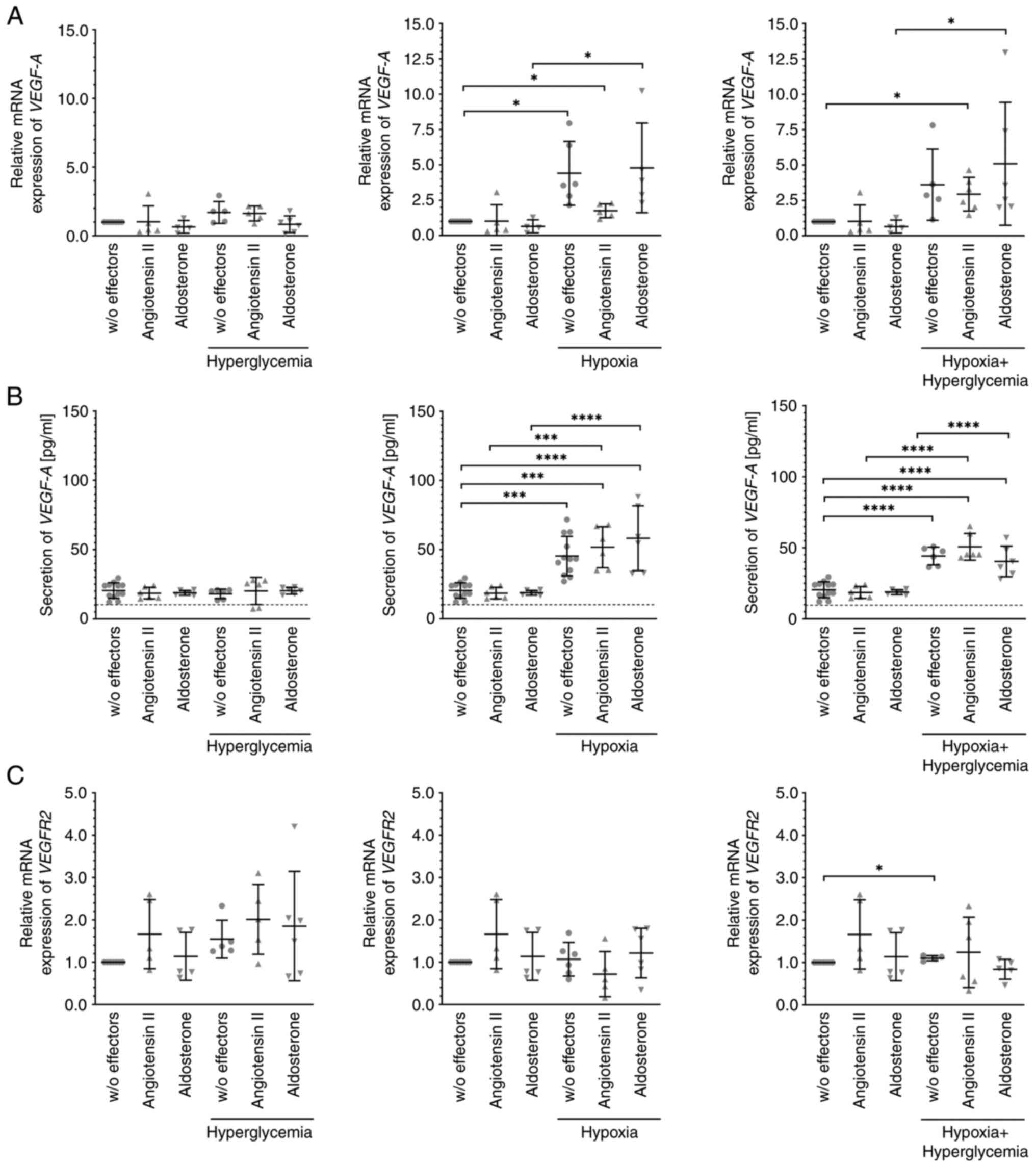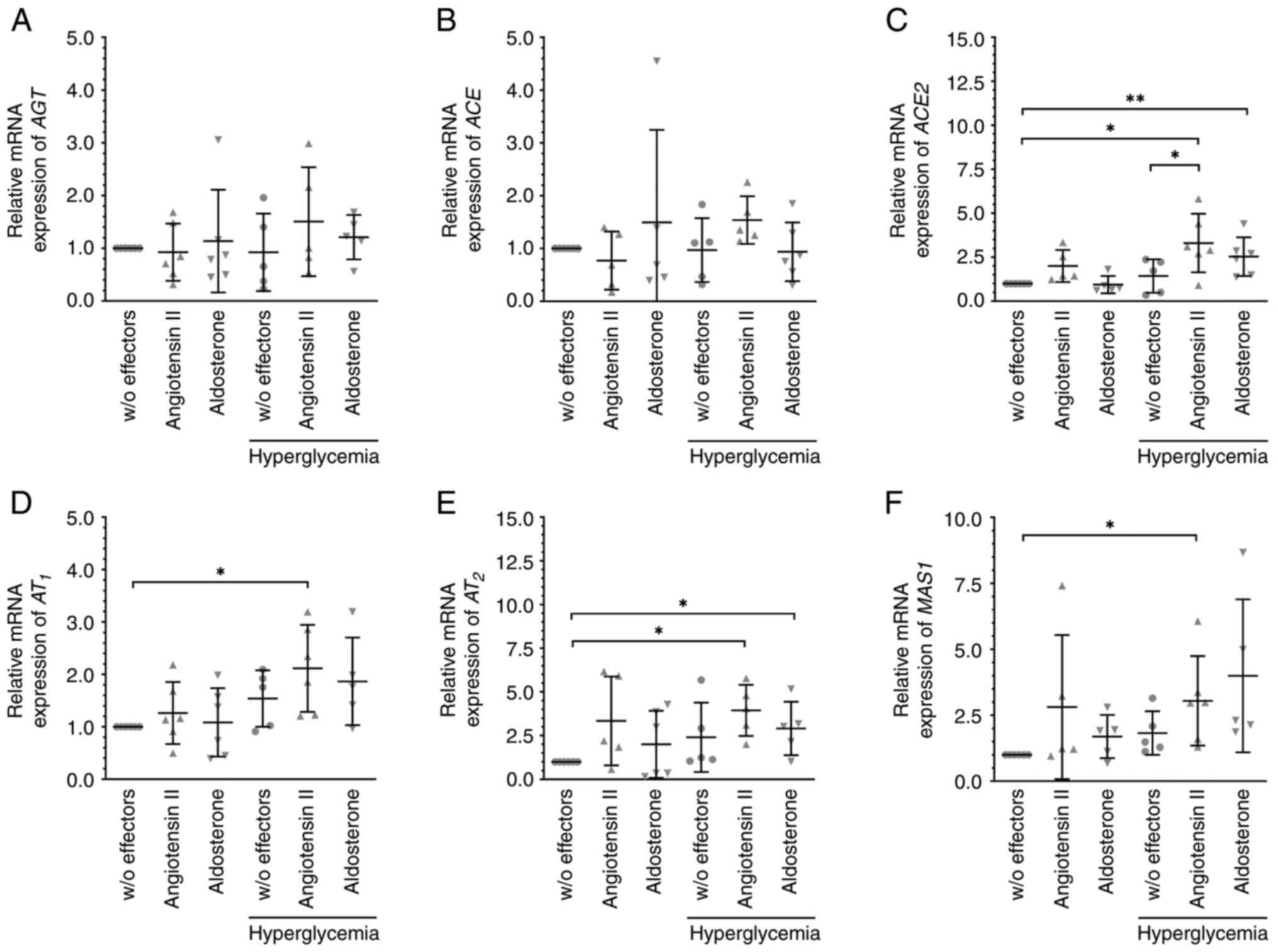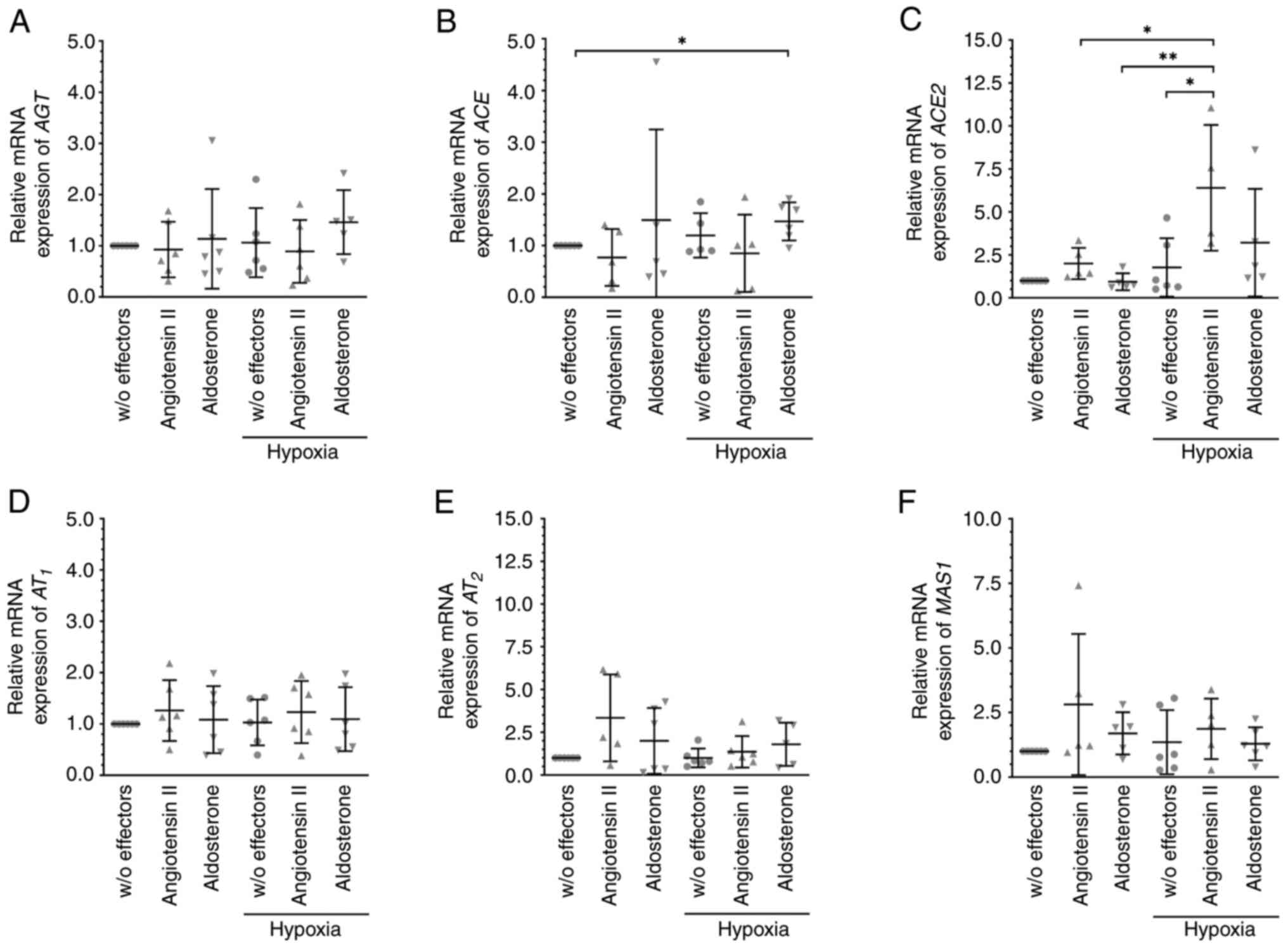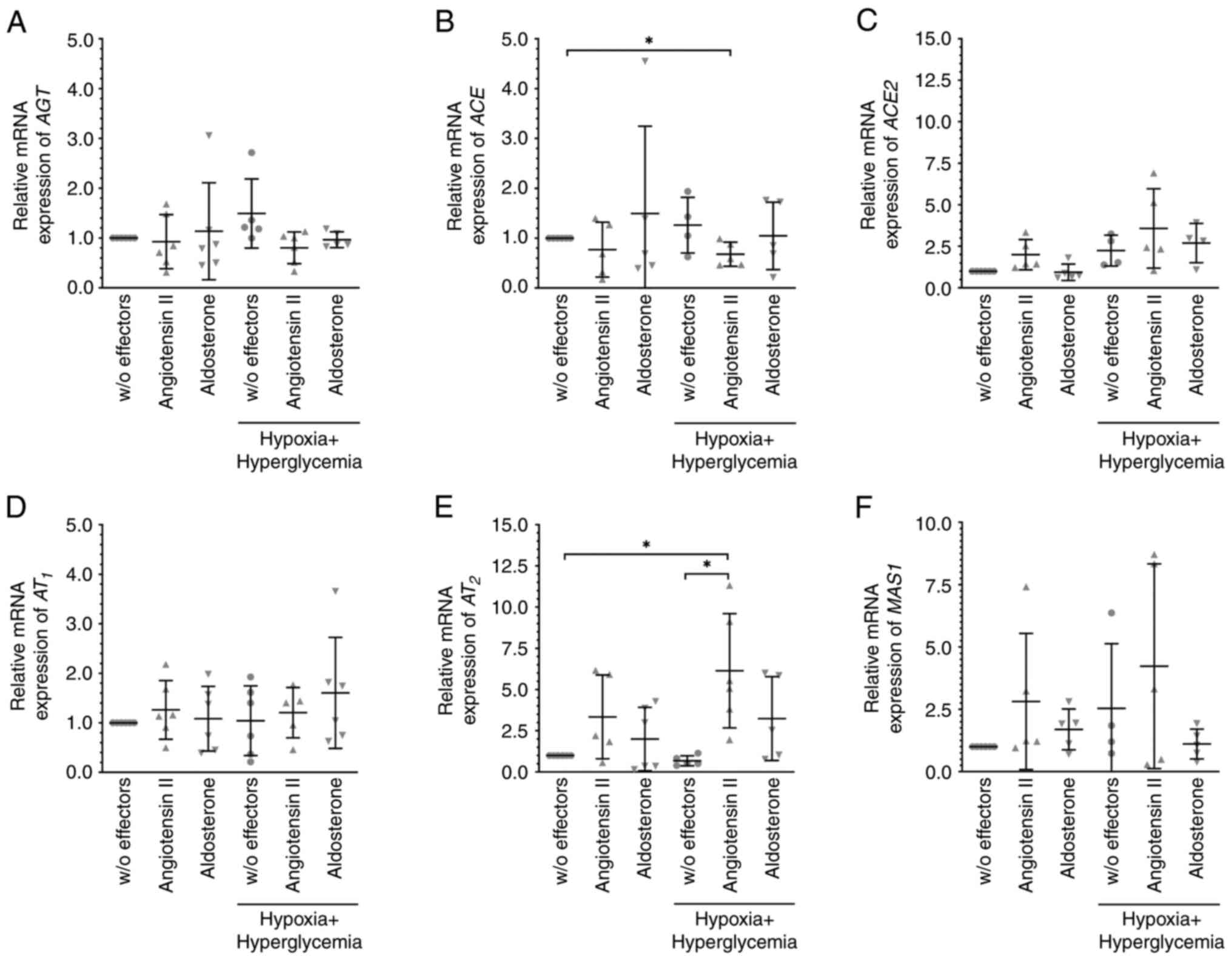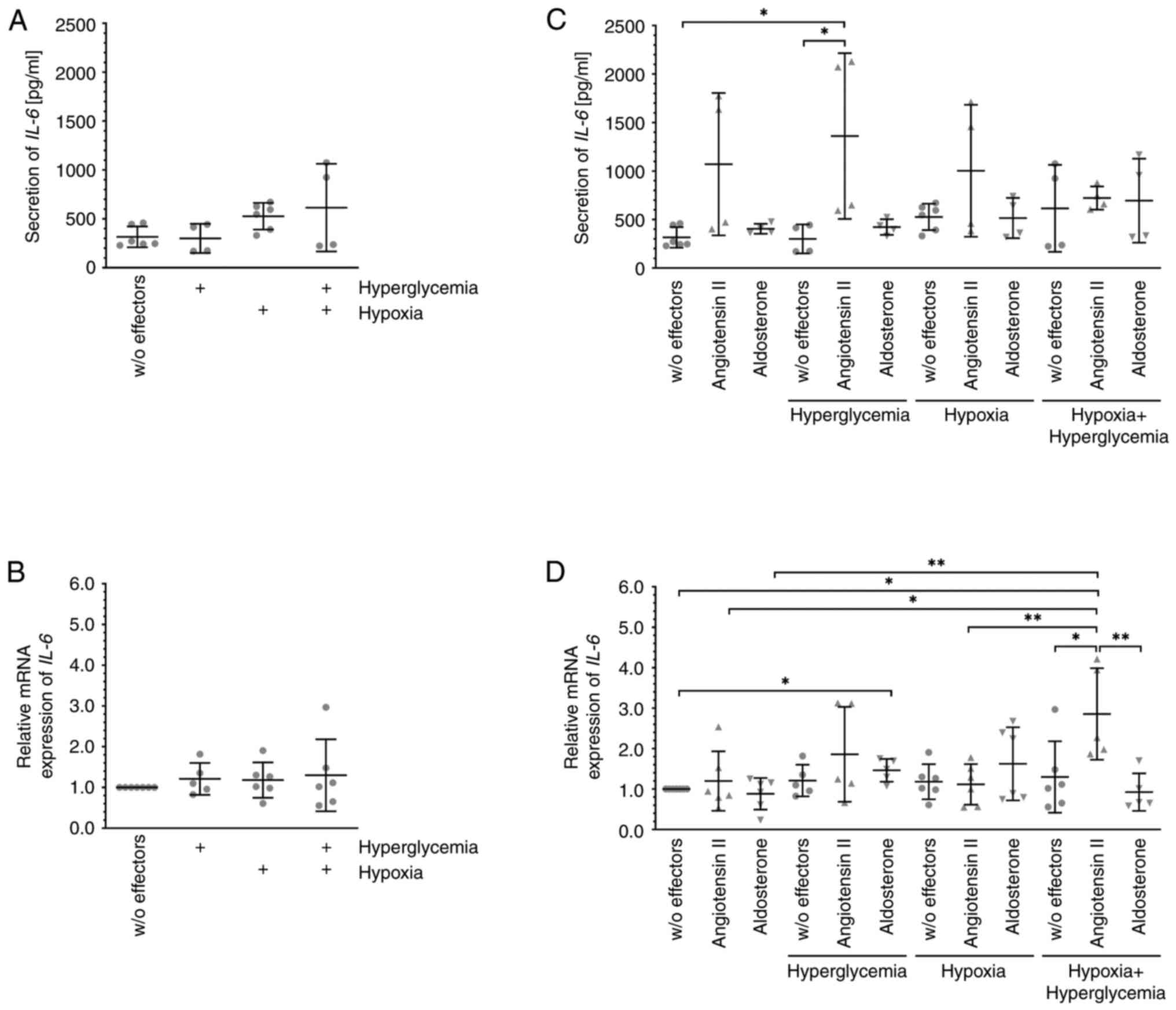|
1
|
Li JQ, Welchowski T, Schmid M, Letow J,
Wolpers C, Pascual-Camps I, Holz FG and Finger RP: Prevalence,
incidence and future projection of diabetic eye disease in Europe:
A systematic review and meta-analysis. Eur J Epidemiol. 35:11–23.
2020.PubMed/NCBI View Article : Google Scholar
|
|
2
|
King H, Aubert RE and Herman WH: Global
burden of diabetes, 1995-2025: Prevalence, numerical estimates, and
projections. Diabetes Care. 21:1414–1431. 1998.PubMed/NCBI View Article : Google Scholar
|
|
3
|
Ozaki H, Yu AY, Della N, Ozaki K, Luna JD,
Yamada H, Hackett SF, Okamoto N, Zack DJ, Semenza GL and
Campochiaro PA: Hypoxia inducible factor-1alpha is increased in
ischemic retina: Temporal and spatial correlation with VEGF
expression. Invest Ophthalmol Vis Sci. 40:182–189. 1999.PubMed/NCBI
|
|
4
|
Bringmann A, Reichenbach A and Wiedemann
P: Pathomechanisms of cystoid macular edema. Ophthalmic Res.
36:241–249. 2004.PubMed/NCBI View Article : Google Scholar
|
|
5
|
Campochiaro PA: Seeing the light: New
insights into the molecular pathogenesis of retinal diseases. J
Cell Physiol. 213:348–354. 2007.PubMed/NCBI View Article : Google Scholar
|
|
6
|
Aiello LP, Avery RL, Arrigg PG, Keyt BA,
Jampe HD, Shah ST, Pasquale LR, Thieme H, Iwamoto MA, Park JE, et
al: Vascular endothelial frowth factor in ocular fluid of patients
with diabetic retinopathy and other retinal disorders. N Engl J
Med. 331:1480–1487. 1994.PubMed/NCBI View Article : Google Scholar
|
|
7
|
Qaum T, Xu Q, Joussen AM, Clemens MW, Qin
W, Miyamoto K, Hassessian H, Wiegand SJ, Rudge J, Yancopoulos GD
and Adamis AP: VEGF-initiated blood-retinal barrier breakdown in
early diabetes. Invest Ophthalmol Vis Sci. 42:2408–2413.
2001.PubMed/NCBI
|
|
8
|
Park SP and Ahn JK: Changes of aqueous
vascular endothelial growth factor and interleukin-6 after
intravitreal triamcinolone for branch retinal vein occlusion. Clin
Exp Ophthalmol. 36:831–835. 2008.PubMed/NCBI View Article : Google Scholar
|
|
9
|
Noma H, Funatsu H, Mimura T, Harino S and
Hori S: Vitreous levels of interleukin-6 and vascular endothelial
growth factor in macular edema with central retinal vein occlusion.
Ophthalmology. 116:87–93. 2009.PubMed/NCBI View Article : Google Scholar
|
|
10
|
Ghodasra DH, Fante R, Gardner TW, Langue
M, Niziol LM, Besirli C, Cohen SR, Dedania VS, Demirci H, Jain N,
et al: Safety and feasibility of quantitative multiplexed cytokine
analysis from office-based vitreous aspiration. Invest Ophthalmol
Vis Sci. 57:3017–3023. 2016.PubMed/NCBI View Article : Google Scholar
|
|
11
|
Tsai T, Kuehn S, Tsiampalis N, Vu MK,
Kakkassery V, Stute G, Dick HB and Joachim SC: Anti-inflammatory
cytokine and angiogenic factors levels in vitreous samples of
diabetic retinopathy patients. PLoS One.
13(e0194603)2018.PubMed/NCBI View Article : Google Scholar
|
|
12
|
Klaassen I, Avery P, Schlingemann RO and
Steel DHW: Vitreous protein networks around ANG2 and VEGF in
proliferative diabetic retinopathy and the differential effects of
aflibercept versus bevacizumab pre-treatment. Sci Rep.
12(21062)2022.PubMed/NCBI View Article : Google Scholar
|
|
13
|
Danser AH, van den Dorpel MA, Deinum J,
Derkx FH, Franken AA, Peperkam E, de Jong PT and Schalekamp MA:
Renin, prorenin, and immunoreactive renin in vitreous fluid from
eyes with and without diabetic retinopathy. J Clin Endocrinol
Metab. 68:160–167. 1989.PubMed/NCBI View Article : Google Scholar
|
|
14
|
Funatsu H, Yamashita H, Nakanishi Y and
Hori S: hypox II and vascular endothelial growth factor in the
vitreous fluid of patients with proliferative diabetic retinopathy.
Br J Ophthalmol. 86:311–315. 2002.PubMed/NCBI View Article : Google Scholar
|
|
15
|
Funatsu H, Yamashita H, Ikeda T, Nakanishi
Y, Kitano S and Hori S: Angiotensin II and vascular endothelial
growth factor in the vitreous fluid of patients with diabetic
macular edema and other retinal disorders. Am J Ophthalmol.
133:537–543. 2002.PubMed/NCBI View Article : Google Scholar
|
|
16
|
Berka JL, Stubbs AJ, Wang DZ,
DiNicolantonio R, Alcorn D, Campbell DJ and Skinner SL:
Renin-containing Mueller cells of the retina display endocrine
features. Invest Ophthalmol Vis Sci. 36:1450–1458. 1995.PubMed/NCBI
|
|
17
|
Gerhardinger C, Costa MB, Coulombe MC,
Toth I, Hoehn T and Grosu P: Expression of acute-phase response
proteins in retinal Mueller cells in diabetes. Invest Ophthalmol
Vis Sci. 46:349–357. 2005.PubMed/NCBI View Article : Google Scholar
|
|
18
|
Senanayake P, Drazba J, Shadrach K,
Milsted A, Rungger-Brandle E, Nishiyama K, Miura S, Karnik S, Sears
JE and Hollyfield JG: Angiotensin II and its receptor subtypes in
the human retina. Invest Ophthalmol Vis Sci. 48:3301–3311.
2007.PubMed/NCBI View Article : Google Scholar
|
|
19
|
Downie LE, Vessey K, Miller A, Ward MM,
Pianta MJ, Vingrys AJ, Wilkinson-Berka JL and Fletcher EL: Neuronal
and glial cell expression of angiotensin II type 1 (AT1) and type 2
(AT2) receptors in the rat retina. Neuroscience. 161:195–213.
2009.PubMed/NCBI View Article : Google Scholar
|
|
20
|
Ferrari-Dileo G, Davis EB and Anderson DR:
Angiotensin binding sites in bovine and human retinal blood
vessels. Invest Ophthalmol Vis Sci. 28:1747–1751. 1987.PubMed/NCBI
|
|
21
|
Wheeler-Schilling TH, Sautter M, Guenther
E and Kohler K: Expression of angiotensin-converting enzyme (ACE)
in the developing chicken retina. Exp Eye Res. 72:173–182.
2001.PubMed/NCBI View Article : Google Scholar
|
|
22
|
Tikellis C, Johnston CI, Forbes JM, Burns
WC, Thomas MC, Lew RA, Yarski M, Smith AI and Cooper ME:
Identification of angiotensin converting enzyme 2 in the rodent
retina. Curr Eye Res. 29:419–427. 2004.PubMed/NCBI View Article : Google Scholar
|
|
23
|
Prasad T, Verma A and Li Q: Expression and
cellular localization of the Mas receptor in the adult and
developing mouse retina. Mol Vis. 20:1443–1455, eCollection 2014.
2014.PubMed/NCBI
|
|
24
|
Zhu P, Verma A, Prasad T and Li Q:
Expression and function of Mas-related G protein-coupled receptor D
and its ligand alamandine in retina. Mol Neurobiol. 57:513–527.
2020.PubMed/NCBI View Article : Google Scholar
|
|
25
|
Wilkinson-Berka JL, Suphapimol V, Jerome
JR, Deliyanti D and Allingham MJ: Angiotensin II and aldosterone in
retinal vasculopathy and inflammation. Exp Eye Res.
187(107766)2019.PubMed/NCBI View Article : Google Scholar
|
|
26
|
Chung O, Kühl H, Stoll M and Unger T:
Physiological and pharmacological implications of AT1 versus AT2
receptors. Kidney Int. 54 (Suppl):S95–SS99. 1998.PubMed/NCBI View Article : Google Scholar
|
|
27
|
Patel VB, Zhong JC, Grant MB and Oudit GY:
Role of the ACE2/angiotensin 1-7 axis of the renin-angiotensin
system in heart failure. Circ Res. 118:1313–1326. 2016.PubMed/NCBI View Article : Google Scholar
|
|
28
|
Limb GA, Salt TE, Munro PM, Moss SE and
Khaw PT: In vitro characterization of a spontaneously immortalized
human Mueller cell line (MIO-M1). Invest Ophthalmol Vis Sci.
43:864–869. 2002.PubMed/NCBI
|
|
29
|
Schmalen A, Lorenz L, Grosche A, Pauly D,
Deeg CA and Hauck SM: Proteomic phenotyping of stimulated Mueller
cells uncovers profound pro-inflammatory signaling and
antigen-presenting capacity. Front Pharmacol.
12(771571)2021.PubMed/NCBI View Article : Google Scholar
|
|
30
|
Livak KJ and Schmittgen TD: Analysis of
relative gene expression data using real-time quantitative PCR and
the 2(-Delta Delta C(T)) Method. Methods. 25:402–408.
2001.PubMed/NCBI View Article : Google Scholar
|
|
31
|
Eastlake K, Banerjee PJ, Angbohang A,
Charteris DG, Khaw PT and Limb GA: Mueller glia as an important
source of cytokines and inflammatory factors present in the gliotic
retina during proliferative vitreoretinopathy. Glia. 64:495–506.
2016.PubMed/NCBI View Article : Google Scholar
|
|
32
|
Mohammad G, AlSharif HM, Siddiquei MM,
Ahmad A, Alam K and Abu El-Asrar AM: Rho-associated protein
kinase-1 mediates the regulation of inflammatory markers in
diabetic retina and in retinal Mueller cells. Ann Clin Lab Sci.
48:137–145. 2018.PubMed/NCBI
|
|
33
|
Gilbert RE, Vranes D, Berka JL, Kelly DJ,
Cox A, Wu LL, Stacker SA and Cooper ME: Vascular endothelial growth
factor and its receptors in control and diabetic rat eyes. Lab
Invest. 78:1017–1027. 1998.PubMed/NCBI
|
|
34
|
Witmer AN, Blaauwgeers HG, Weich HA,
Alitalo K, Vrensen GF and Schlingemann RO: Altered expression
patterns of VEGF receptors in human diabetic retina and in
experimental VEGF-induced retinopathy in monkey. Invest Ophthalmol
Vis Sci. 43:849–857. 2002.PubMed/NCBI
|
|
35
|
Deissler HL, Stutzer JN, Lang GK, Grisanti
S, Lang GE and Ranjbar M: VEGF receptor 2 inhibitor nintedanib
completely reverts VEGF-A165-induced disturbances of
barriers formed by retinal endothelial cells or long-term
cultivated ARPE-19 cells. Exp Eye Res. 194(108004)2020.PubMed/NCBI View Article : Google Scholar
|
|
36
|
Li Y, Yan Z, Chaudhry K and Kazlauskas A:
The renin-angiotensin-aldosterone system (RAAS) is one of the
effectors by which vascular endothelial growth factor
(VEGF)/anti-VEGF controls the endothelial cell barrier. Am J
Pathol. 190:1971–1981. 2020.PubMed/NCBI View Article : Google Scholar
|
|
37
|
Sano H, Hosokawa K, Kidoya H and Takakura
N: Negative regulation of VEGF-induced vascular leakage by blockade
of angiotensin II type 1 receptor. Arterioscler Thromb Vasc Biol.
26:2673–2680. 2006.PubMed/NCBI View Article : Google Scholar
|
|
38
|
Kim JH, Kim JH, Yu YS, Cho CS and Kim KW:
Blockade of angiotensin II attenuates VEGF-mediated blood-retinal
barrier breakdown in diabetic retinopathy. J Cereb Blood Flow
Metab. 29:621–628. 2009.PubMed/NCBI View Article : Google Scholar
|
|
39
|
Moravski CJ, Kelly DJ, Cooper ME, Gilbert
RE, Bertram JF, Shahinfar S, Skinner SL and Wilkinson-Berka JL:
Retinal neovascularization is prevented by blockade of the
renin-angiotensin system. Hypertension. 36:1099–1104.
2000.PubMed/NCBI View Article : Google Scholar
|
|
40
|
Chou CH, Hung CS, Liao CW, Wei LH, Chen
CW, Shun CT, Wen WF, Wan CH, Wu XM, Chang YY, et al: IL-6
trans-signalling contributes to aldosterone-induced cardiac
fibrosis. Cardiovasc Res. 114:690–702. 2018.PubMed/NCBI View Article : Google Scholar
|
|
41
|
Phipps JA, Vessey KA, Brandli A, Na N,
Tran MX, Jobling AI and Fletcher E: The role of angiotensin II/AT1
receptor signaling in regulating retinal microglial activation.
Invest Ophthalmol Vis Sci. 59:487–498. 2018.PubMed/NCBI View Article : Google Scholar
|
|
42
|
Glass J, Robinson R, Lee TJ, Sharma A and
Sharma S: Interleukin-6 trans-signaling mediated regulation of
paracellular permeability in human retinal endothelial cells. Inter
J Transl Med. 1:137–153. 2021.
|
|
43
|
Kaschina E, Namsolleck P and Unger T: AT2
receptors in cardiovascular and renal diseases. Pharmacol Res.
125(Pt A):39–47. 2017.PubMed/NCBI View Article : Google Scholar
|
|
44
|
Rodrigues Prestes TR, Rocha NP, Miranda
AS, Teixeira AL and Simoes-E-Silva AC: The anti-inflammatory
potential of ACE2/angiotensin-(1-7)/Mas receptor axis: Evidence
from basic and clinical research. Curr Drug Targets. 18:1301–1313.
2017.PubMed/NCBI View Article : Google Scholar
|
|
45
|
Klaassen I, Van Noorden CJ and
Schlingemann RO: Molecular basis of the inner blood-retinal barrier
and its breakdown in diabetic macular edema and other pathological
conditions. Prog Retin Eye Res. 34:19–48. 2013.PubMed/NCBI View Article : Google Scholar
|
|
46
|
Mauer M, Zinman B, Gardiner R, Suissa S,
Sinaiko A, Strand T, Drummond K, Donnelly S, Goodyer P, Gubler MC
and Klein R: Renal and retinal effects of enalapril and losartan in
type 1 diabetes. N Engl J Med. 361:40–51. 2009.PubMed/NCBI View Article : Google Scholar
|
|
47
|
Cernes R, Mashavi M and Zimlichman R:
Differential clinical profile of candesartan compared to other
angiotensin receptor blockers. Vasc Health Risk Manag. 7:749–759.
2011.PubMed/NCBI View Article : Google Scholar
|



